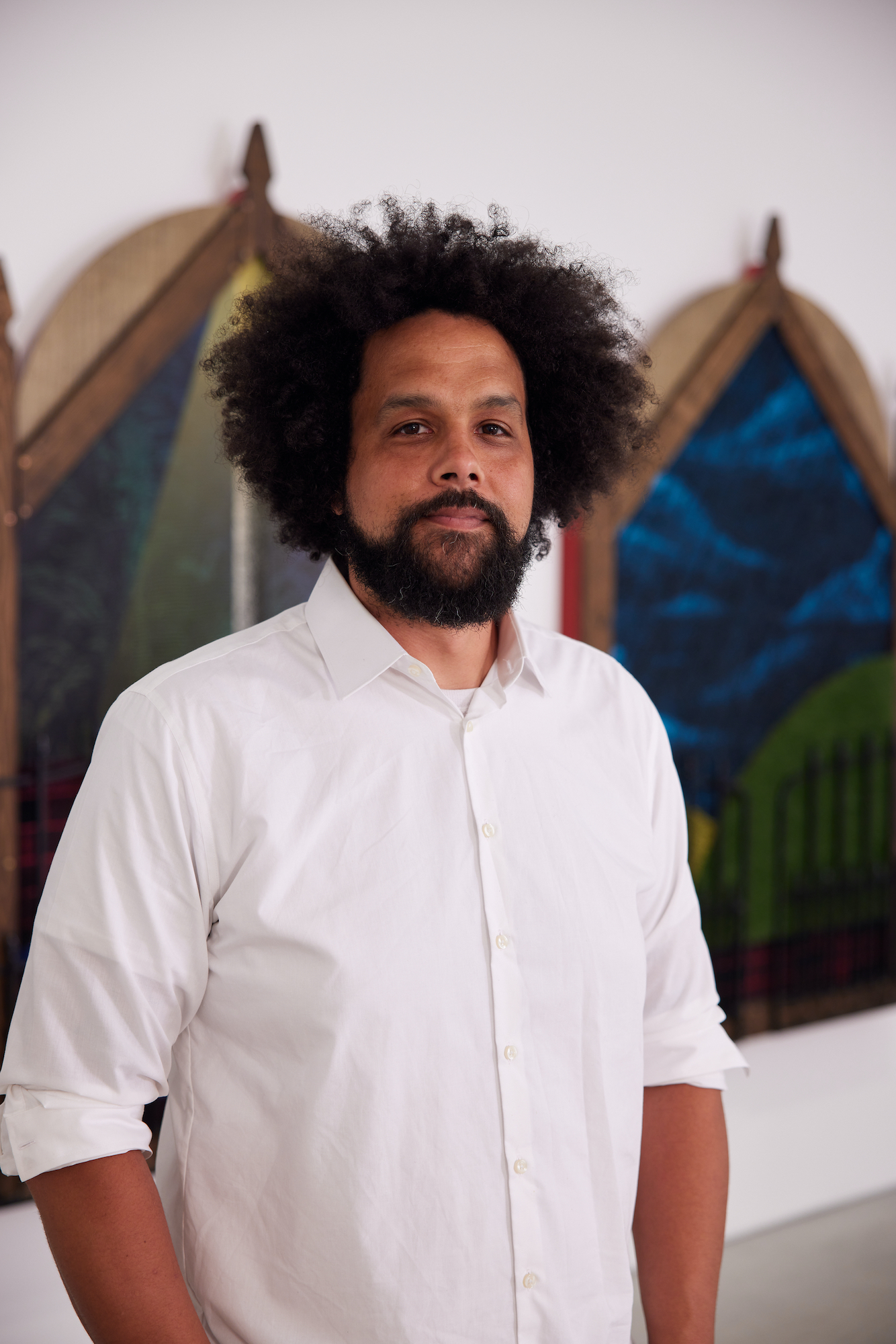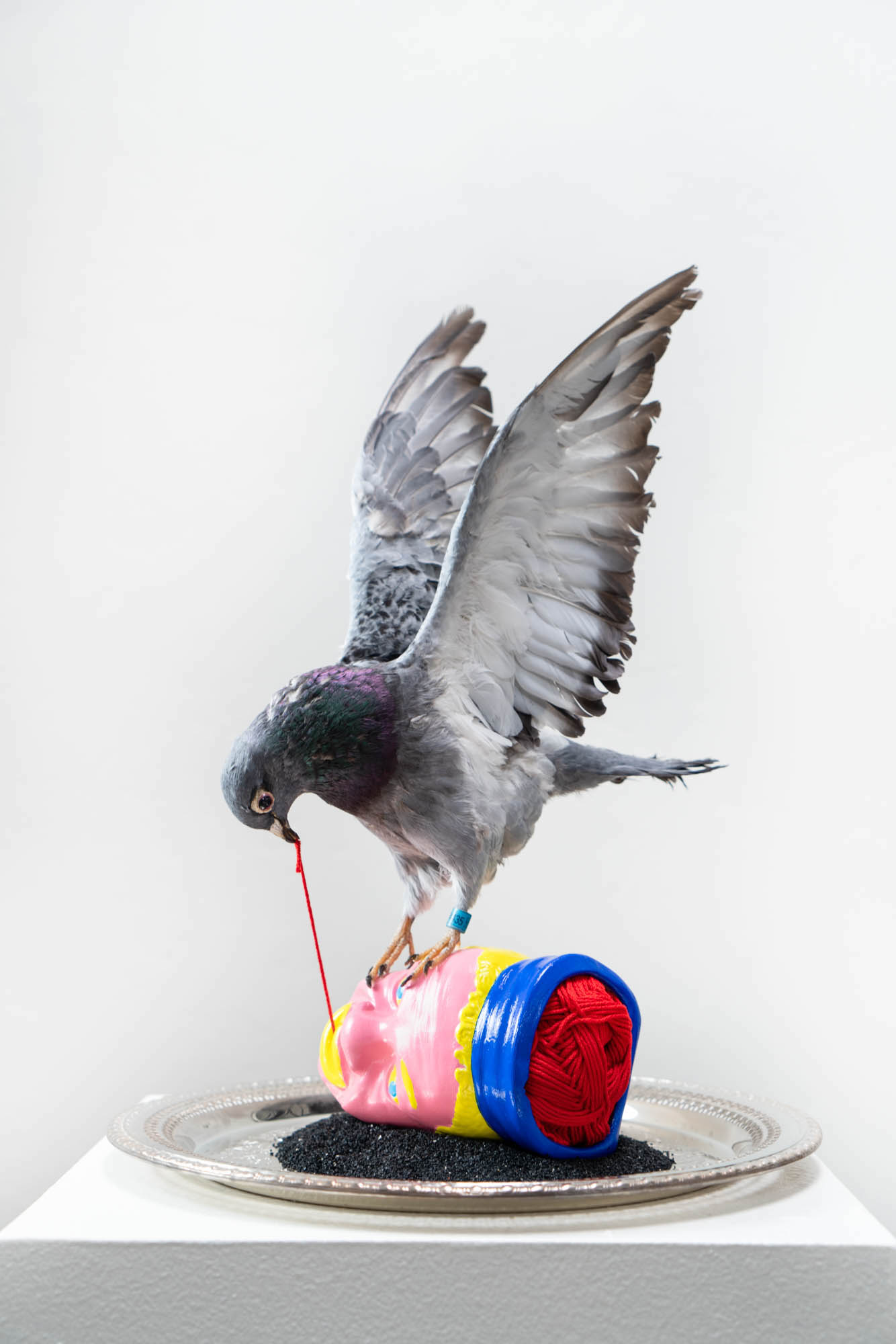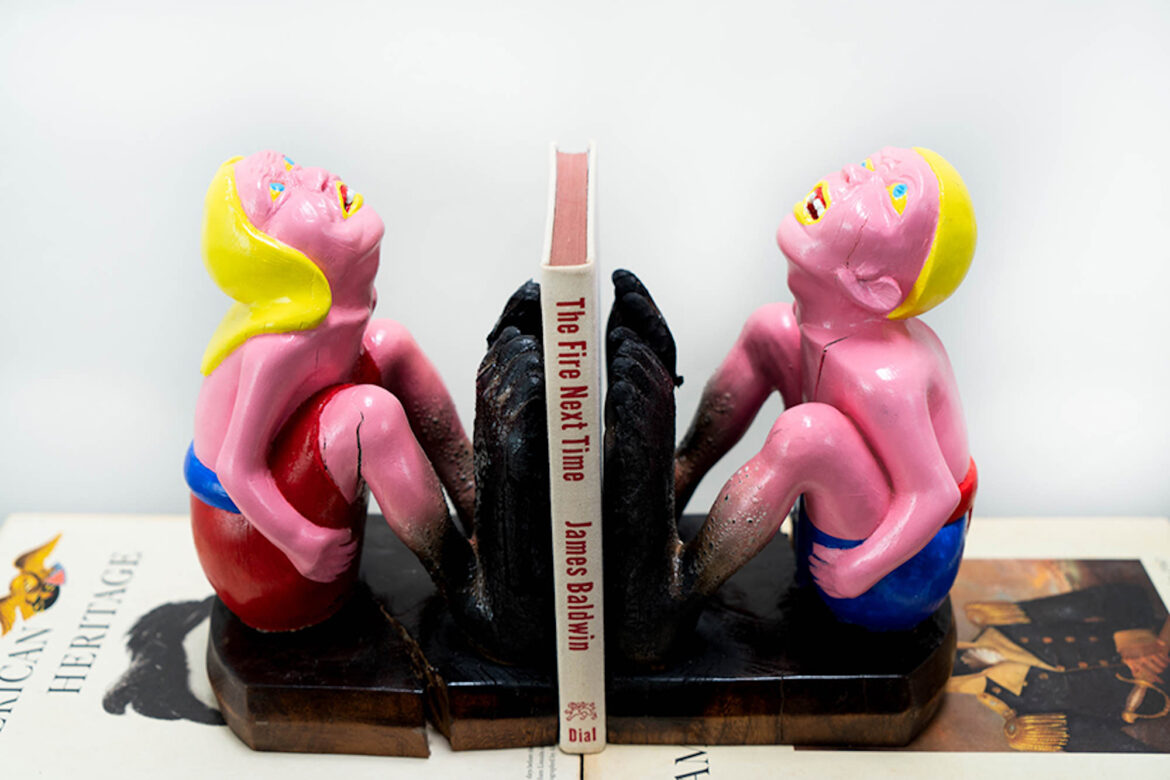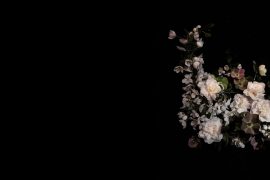Words by Lavanya Narayanan
Images provided by Aaron Coleman
Aaron Coleman challenges the status quo with his pathbreaking creations in the world of printmaking, sculpture, collage, and installation. His work, influenced heavily by his beginnings as an adolescent graffiti writer on the streets of downtown Indianapolis, asks questions that are sometimes too uncomfortable to answer–exposing his audiences to sociopolitical quandaries that challenge current societal structure.
Lavanya Narayanan: What is your background, and what role has art played in your life?
Aaron Coleman: I moved to Indianapolis at age 12 and met a bunch of young cats (ages 13, 14, 15) who were interested in graffiti and writing their name on stuff. I was already being raised under this umbrella of hip-hop culture and graffiti is a big part of that, which is probably why it caught my attention. I’ve had a serious studio practice since I was about 20 years old, and I’m 38 now, so that’s 18 years.
LN: You say ‘graffiti writer’ — can you explain that?
AC: Graffiti writers don’t call themselves graffiti artists — graffiti is about taking back public space and fucking shit up. It’s not flowery and soft — it’s really rugged and raw. It’s about destroying property and putting your name on something.
LN: Do you feel there’s a negative lens on being a graffiti artist since it’s not a ‘formalized artistic practice?’
AC: We live in a world which arbitrarily values certain opinions, stories, and people who look and speak a certain way. When you introduce a new language, accent, dialect, or way of thinking that upsets the status quo, people become focused on censoring it. It happens with books, with languages, and with history. I still hold graffiti in such high regard because it’s one of the few ways that people are expressing themselves, without caring who likes it or not.
LN: How did this interest evolve into your college experience?
AC: My interest in graffiti led me to Herron School for Art and Design, first to graphic design, then painting, and then printmaking.
Printmaking has historically been a political medium of the people. Because it requires presses, chemicals and materials that aren’t feasible either spacewise or safety-wise to have in your own home, there’s a built-in community that shares and fosters that art form. It felt like being part of a graffiti crew but it was a different way of expressing ourselves.

LN: Printmaking involves repetition and mass production. Was that attractive in terms of commercial viability and accessibility?
AC: Definitely. It makes the work more accessible to a wider audience at a lower price point. Also, it allows for mass distribution. So, you can carve a woodcut that has a powerful message on it, and print that on the cheapest paper you can find and hand out hand-printed flyers all day long. It puts power in the hands of people in social or political movements who don’t have a lot of money.
LN: How was your experience in printmaking at the time?
AC: I did a lot of work and got a lot of exposure. I would credit printmaking with putting me on the map as an artist. Since then, I’ve moved into sculptural, conceptual work with nontraditional materials to get my ideas across.

LN: How has your artistic style evolved over time?
AC: To be honest, I don’t think style is the word I would use! I alter existing materials, objects or images (not necessarily art objects) that are imbued with context, history and energy, to make you think about them differently. Usually, these are objects that have a racial history to them, and I change their orientation or their context to draw attention to a problematic history that’s been hidden from us or a story that hasn’t been told. The goal is to show people why they’re problematic or erase them from the face of the Earth or expose the lie that they perpetuate. The purpose is multifaceted but simple: it’s a political act.
LN: How do you find that your work is received, given that you’re not scared to challenge the unchallenged to comment on class, race, creed, etc?
AC: People either try to understand my work or they’re offended by it. Regardless, they’re now thinking about something that they weren’t thinking about before. I doubt someone is going to have a change of heart the minute they see my work. What I can do is encourage people to be more aware, view things differently or to think with a little more empathy. I bring people in, show them something interesting, and allow them to have a conversation without beating them over the head with it.
I don’t think being aggressively political is commercially viable for anyone except, maybe, a politician *laughs.* But it’s never been about that for me. I have a livelihood, which is teaching, that supports and demands that I keep doing the thing I love to do, which is making art.

LN: Tell us about your connection to Indianapolis.
AC: I live in Indianapolis now and work at Herron School of Art & Design. I credit Indianapolis with a lot — it’s where I met graffiti writers, which put me on the path to thinking about political acts and being an artist. As a Herron undergrad, I met challenging mentors who got me ready for grad school, where I really flourished and exploded. Now I’m back, giving back to the system that raised me.
LN: Do you have advice for emerging artists who are looking for opportunities?
AC: Rather than exhibitions, look for grants and residencies that give you time and space to work. Those are the opportunities to get your name out there and give you money to go and stay, live, and work in their facilities and gain the hands-on experience you need.
LN: What are your thoughts on BUTTER?
AC: There are many important “coastal” art fairs and exhibitions that focus on artists who study or work in New York or Los Angeles — they bring amazing artists, they give people opportunities, but none of them do what BUTTER’s doing: focusing on a demographic that’s been kept out of the mainstream — Black people and emerging artists particularly. BUTTER brings attention and support to artists in the Midwest who are making amazing work but don’t get a chance to be seen.
My wish would be that magazines, critics, and galleries start looking at Middle America for the next emerging artist.
To stay connected with Aaron follow him on:
Instagram @aaron_s_coleman
Website: aaroncolemanprintmaking.com




